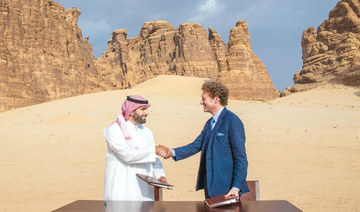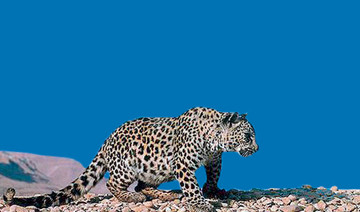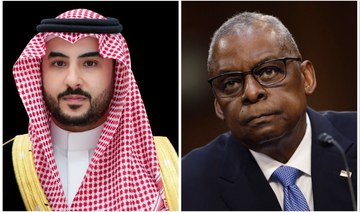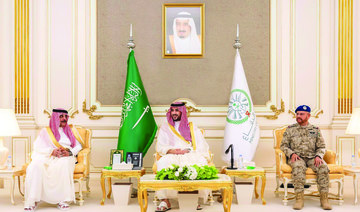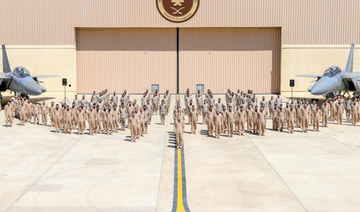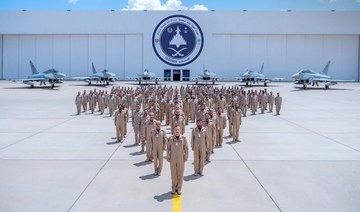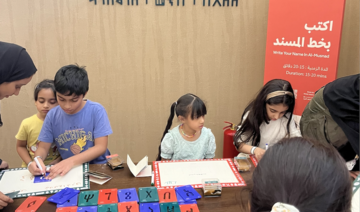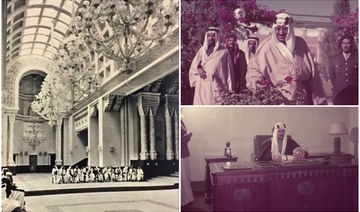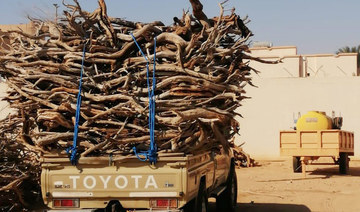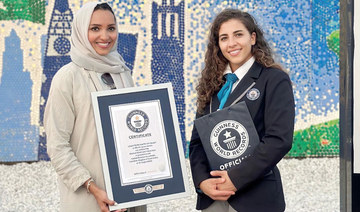ALULA: The birth of two Arabian leopard cubs has been hailed as a “new beacon of hope” in Saudia Arabia’s bid to reintroduce the critically endangered big cat back into the wild.
The Saudi Royal Commission for AlUla (RCU) revealed that the male and female cubs, born on April 26 at the Prince Saud Al-Faisal Wildlife Research Center in Taif, had now been vaccinated after passing a crucial 12-week developmental milestone.
The news marks a significant step in the RCU’s breeding program to help preserve and eventually reintroduce the subspecies into the north-west of the Kingdom as part of its portfolio of Arabian Leopard Initiatives (ALI).
The commission’s charter aims to deliver a sensitive and responsible transformation of the AlUla region and protect its nature and wildlife.
During the initial 12-week period of the newborn leopards’ lives, they successfully bonded with their 10-year-old mother Hamms (which means “whisper” in Arabic), learned important behaviors and grew stronger in the seclusion of their den. The cubs will remain with their mother for the next 18 months to two years in line with global best practice for captive breeding programs.
Saudi Minister of Culture and RCU Gov. Prince Badr bin Abdullah bin Farhan Al-Saud, said: “This is a historic moment in our efforts to reintroduce the Arabian leopard to the AlUla region.
“With fewer than an estimated 200 Arabian leopards remaining in the wild globally, this is one of the most critically endangered animals in the world, and these cubs represent a new beacon of hope for the renewal of a subspecies on the brink of extinction. It is our duty to protect, conserve and build population numbers to preserve the species from becoming a footnote of history.
“That is why the RCU is actively championing the revitalization of the Arabian leopard to support the future of this rare and majestic big cat that is native to AlUla,” the prince added.
“The birth of these two cubs will be the first of many as our specialized captive breeding program grows and develops – boosted by the support of local experts, as well as global partners like Panthera.”
The commission’s ALI combines several projects working toward the preservation of the subspecies including an extensive captive breeding and reintroduction program, and the establishment of the Global Fund for the Arabian Leopard.
As a center of excellence, the RCU is establishing a steering committee with leading experts from around the world to enhance and inform ALI’s captive breeding, husbandry, veterinary and reintroduction practices in the existing breeding facility located in Taif.
The committee will also help guide the design of a state-of-the-art breeding center to be constructed in AlUla county and consult on habitat revitalization projects in the Sharaan Nature Reserve.
It was announced in February that the newly created Global Fund for the Arabian Leopard will have an initial endowment of $25 million (SR94 million), making it the largest fund in the world wholly dedicated to safeguarding the Arabian leopard. Currently in the strategic planning and operational set-up phase, the fund will be fully mobilized by the end of this year.
The news of the leopard cubs’ birth follows the signing in June of a partnership agreement between the RCU governor and Dr. Thomas Kaplan, chairman of the global wild cat conservation organization Panthera.
Saudi Arabia, through this partnership, has in turn joined the Global Alliance for Wild Cats, making a commitment to invest $20 million over the next 10 years.
Successful birth of Arabian leopard cubs ‘new beacon of hope’ in Saudi bid to save species from extinction: Culture minister
Successful birth of Arabian leopard cubs ‘new beacon of hope’ in Saudi bid to save species from extinction: Culture minister
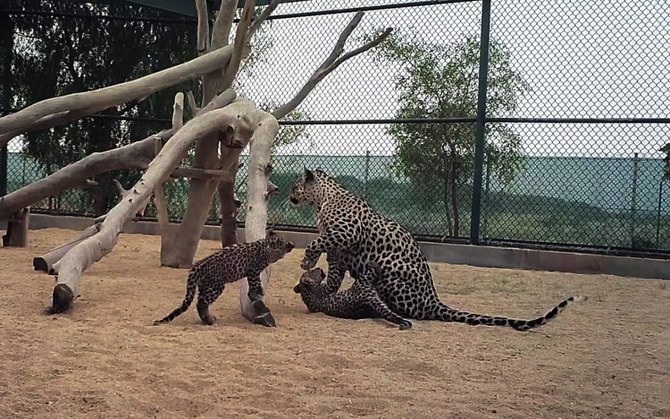
- The news marks a significant step in the RCU’s breeding program
- During the initial 12-week period of the newborn leopards’ lives, they successfully bonded with their 10-year-old mother Hamms
Saudi defense minister, British counterpart discuss military escalation in region
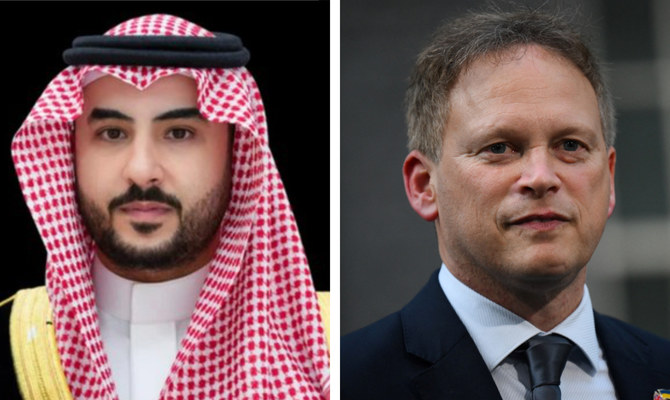
RIYADH: Saudi Arabia’s Minister of Defense Prince Khalid bin Salman received a phone call on Monday from UK Secretary of State for Defense Grant Shapps.
The officials discussed military escalation in the region, its repercussions, and efforts towards containing it.
They also reviewed strategic bilateral relations and military cooperation.
Saudi air force joins several allies in UAE for start of multinational military exercise Desert Flag
Saudi air force joins several allies in UAE for start of multinational military exercise Desert Flag
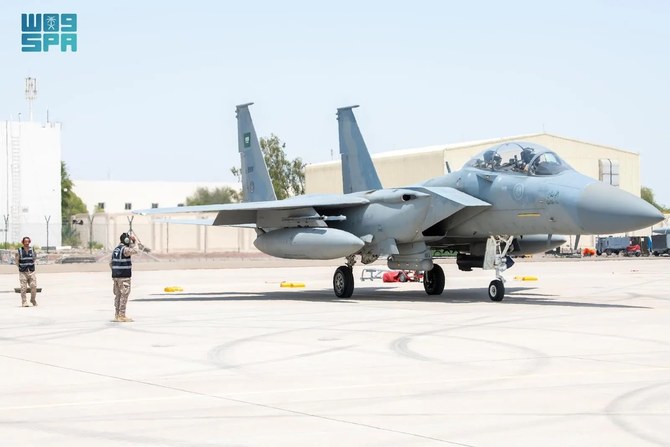
- Other nations taking part in the 3-week exercise include Oman, Turkey, the US, France and South Korea
RIYADH: Personnel from the Royal Saudi Air Force joined their counterparts from several allied nations on Monday at the start of Desert Flag, a multinational military exercise taking place at Al-Dhafra Air Base in the UAE.
Over the next three weeks the forces will take part in various flight-related exercises, including defensive and offensive counter-air operations, close-air support, and combat search and rescue missions, the Saudi Press Agency reported. In addition to Saudi Arabia and the UAE, the participating nations include Oman, Turkey, the US, France and South Korea.
Lt. Col. Adel bin Saeed Abu Malha, the commander of the participating Saudi air force group, said the exercise is designed to facilitate the exchange of military expertise in strategic planning and execution within a simulated wartime environment. It also aims to enhance the operational readiness and combat efficiency of air and technical-support crews and to bolster the ties between the nations’ forces, he added.
Six Saudi F-15SA fighter jets, with their full air, technical and support crews, are taking part in the exercise, Abu Malha said.
The Saudi air force group arrived at Al-Dhafra Air Base last week to begin their preparations. They were greeted by Brig. Gen. Khalid Alhajiri, the military attache at the Saudi Embassy in the UAE.
Marat — a Saudi town with deep roots

- Administratively affiliated with Riyadh Province, Marat oversees several centers, villages and settlements, enjoying governmental facilities and private institutions that have contributed to its development and population growth
RIYADH: One of the oldest cities in Saudi Arabia’s Najd, Marat, lies tucked away in the Al-Washm region of central Saudi Arabia.
Its intriguing history is illuminated in the Arabic book “Glimpses into the History of Marat” by Saudi researcher Abdullah Al-Duwaihi, first published in 2012, yet relevant for those wishing to explore the Kingdom’s history.
Al-Duwaihi painstakingly documents the town’s geography, landmarks, social fabric, governance and centuries-old foundations across about 700 pages. The book also covers Marat’s importance on the Hajj caravan route, its scientific legacy, mosques, sports and culture, archaeological sites and a variety of other facets of society. Accounts from geographers and travelers are included.

The book opens with an overview of Marat governorate, situated in Al-Washm, northwest of Riyadh. It borders the governorates of Al-Quway’iyah and Dhurma to the south, Shaqra to the north, Thadiq and Huraymila to the east and Al-Dawadmi to the west.
Administratively affiliated with Riyadh Province, Marat oversees several centers, villages and settlements, enjoying governmental facilities and private institutions that have contributed to its development and population growth.
FASTFACTS
• When King Abdulaziz traveled from Riyadh to Makkah, one of his first official stops was Marat, where the historic Hijaz Road crossed.
• Iconic natural landmarks in Marat include Ghudair Kumait, a basin where floodwaters accumulate without stagnating.
Iconic natural landmarks profiled in the book include Ghudair Kumait, a basin where floodwaters accumulate without stagnating. It is named after the prominent Jabal Kumait landmark known for its location and form, offering panoramic views of the town. This has led to the popular adage, “Secure Kumait, and you secure Marat,” explains the author.
Along with highlighting Marat’s past, Al-Duwaihi also explores locations such as the ruins of Al-Aroosah and Al-Walidi Well, which was attributed to the Prophet Muhammad’s companion Khalid bin Al-Walid. According to historical accounts, he dug the well during his journey through Marat en route to battle the renegades in Al-Yamama.
Royal history
When King Abdulaziz traveled from Riyadh to Makkah, one of his first official stops was Marat, where the historic Hijaz Road crossed, and where he would stay for several days. Royal tents were set up outside the palace in Marat — built in 1350 AH (1930) — days in advance of his arrival.
As the royal caravan approached, telegrams were sent to prepare for essential supplies. Vehicles and caravans passing through the route would also halt in the town for rest and replenishment, transforming Marat into a bustling commercial hub, especially during the Hajj season, when it teemed with tents, vendors and shoppers lining the roadside.
The book features accounts from various travelers, both foreign and local, who passed through Marat and documented their experiences, including George Forster Sadleir, British explorer Harry Philby, American geologist Thomas C. Barger, Amin Al-Rihani, Youssef Yassin, Ahmed Al-Kadhimi and Atiq Al-Biladi. Yet he overlooked mentioning Ahmad Abdul-Ghafoor Attar, who provided captivating glimpses of the town in the 1960s.
One of the book’s notable features is its exploration of Marat’s architectural heritage, highlighting the coexistence of ancient mud-brick neighborhoods and modern structures. Although the old government palace was demolished due to encroaching modern developments, had it remained, it would have stood as a prominent landmark of the province.
Notable old quarters within Marat’s walls include Bab Al-Naqeeb, Zab’arah, Junaib, Al-Hafsiah, Banban, Hayit Hussain, Al-Shuraiqy, Shari’ah, Subaitah, Qa’rah, Suwail and Al-Naqbah. Outside the walls are Al-Qusaibah, Al-Muraiba’, Al-Ju’di, Bab Al-Naifiah, Qubaibah, Suwaydan, Al-Hulailah, Bab Al-Barr and At-Tuwaila.
According to Al-Duwaihi’s book, Al-Amiriah School was the governorate’s first educational institution, built in 1368 AH (1948). Constructed from traditional mud bricks in Marat’s northeastern quarters, the boys’ elementary school followed design templates set by the Kingdom’s educational authorities at the time.
Later, in 1387 AH (1967), the first school for girls, known as Al-Awwal School, was inaugurated, initially located in the western part of the old town before later relocating to a new governmental premises. Over subsequent years, a series of schools for both boys and girls were progressively opened.
Focus is on the Saudi environment in photo contest with SR100,000 prize up for grabs
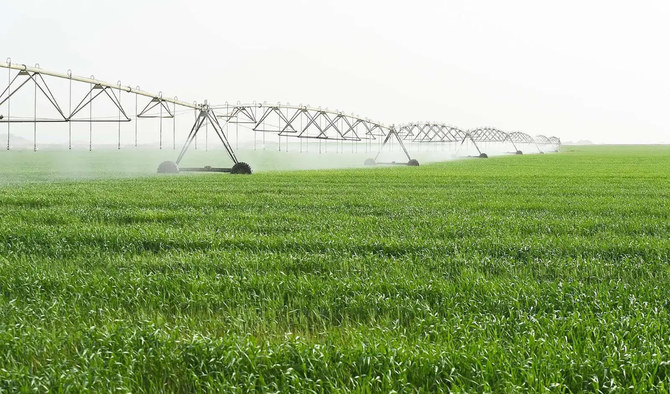
- The competition ties in with Environment Week 2024, which runs from April 28 to May 5 in the Kingdom with the theme ‘Do you know your environment?’
RIYADH: Photographers in the Kingdom have until April 27 to enter a competition that is looking for the best images and videos that showcase the Saudi environment.
The aim of the contest, organized by the Ministry of Environment, Water and Agriculture’s Environmental Awareness Initiative, is to promote environmental awareness through the use of art, and engage the community in the creation and sharing of content that highlights the natural splendor and beauty of the Kingdom.
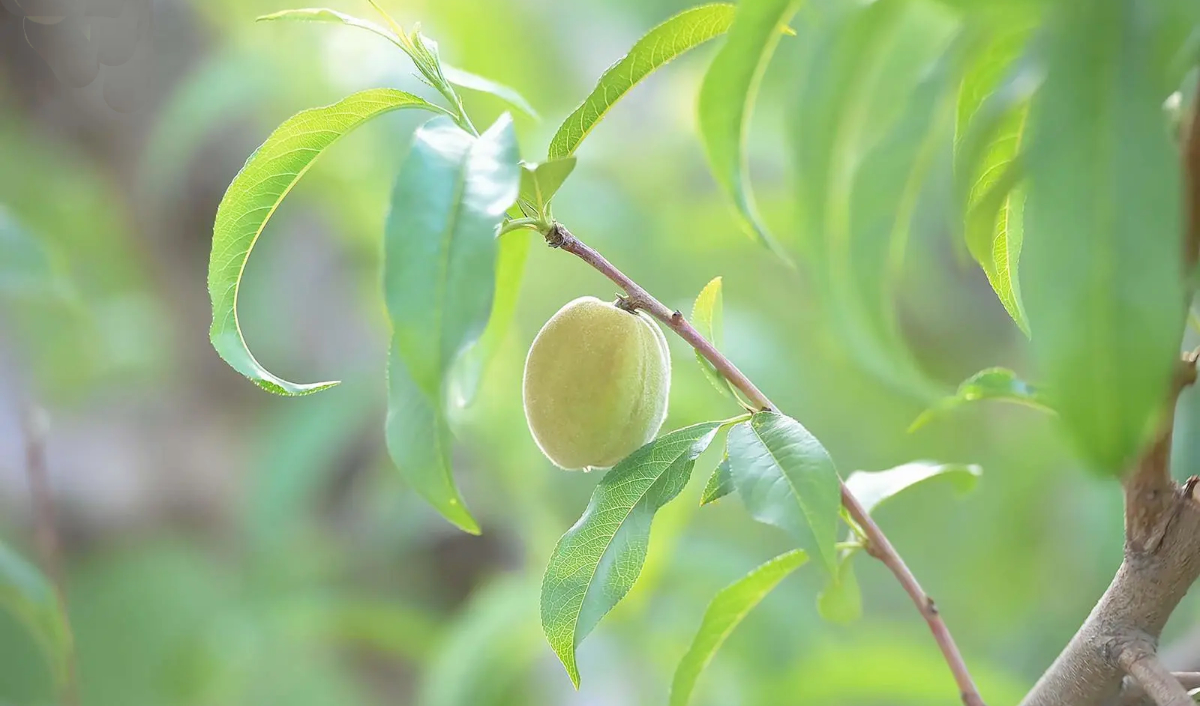
The competition ties in with Environment Week 2024 in Saudi Arabia, which will run from April 28 to May 5 with the theme “Do you know your environment?” Photography enthusiasts across the country are invited to submit photographs, videos or films that best illustrate the nation’s environment.
A panel of judges will choose the winners, who will receive cash prizes of up to SR100,000 ($26,660), the Saudi Press Agency reported. Entrants must own the copyright to their submissions, which should not have been awarded prizes in any other contests. The ministry reserves the right to use submitted images in exhibitions, conferences or on its social media platforms. The photographers’ moral rights to their work will be respected.
The aim of the ministry’s Environmental Awareness Initiative is to raise public understanding of environmental issues, and foster a sense of responsibility toward protecting the Kingdom’s natural resources by encouraging sustainable behaviors among individuals and groups.
Riyadh prepares to host special meeting of World Economic Forum
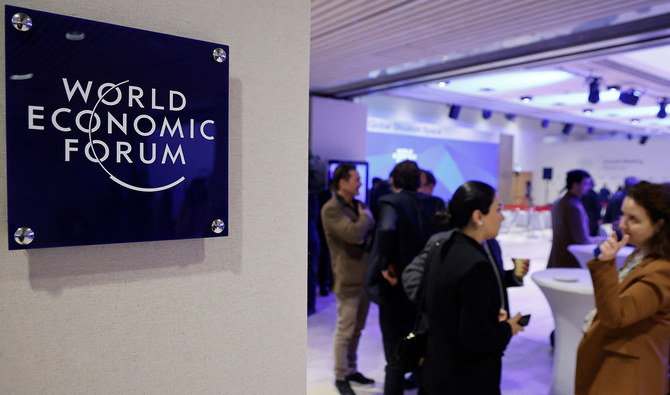
- Heads of state and senior executives from the public, private sectors are expected to be among the participants
- The aim of the meeting is to find solutions to a host of global humanitarian, climate and economic challenges
RIYADH: Final preparations are taking place this week in the Saudi capital, Riyadh, for a special meeting of the World Economic Forum in the city on April 28 and 29.
Heads of state and senior executives from the public and private sectors are expected to be among the participants, who will discuss a range of global economic issues and developments under the theme “Global Collaboration, Growth and Energy for Development.”
The aim of the meeting is to find solutions to a host of global challenges relating to humanitarian issues, the climate and the economy. On the sidelines of the main event, the Kingdom will host exhibitions and other events to highlight the latest developments and trends in areas such as sustainability, innovation and culture.
The selection of Riyadh as host of the special meeting reflects the extensive partnership between Saudi Arabia and the WEF, officials said.
It builds upon the Kingdom’s active participation and contributions to the WEF’s Annual Meetings in Davos.
The agenda is designed to rekindle the spirit of cooperation and collaboration with various panel discussions, workshops, and networking opportunities. It represents a significant gathering of global leaders and experts dedicated to forging a path toward a more resilient, sustainable, and equitable world.




